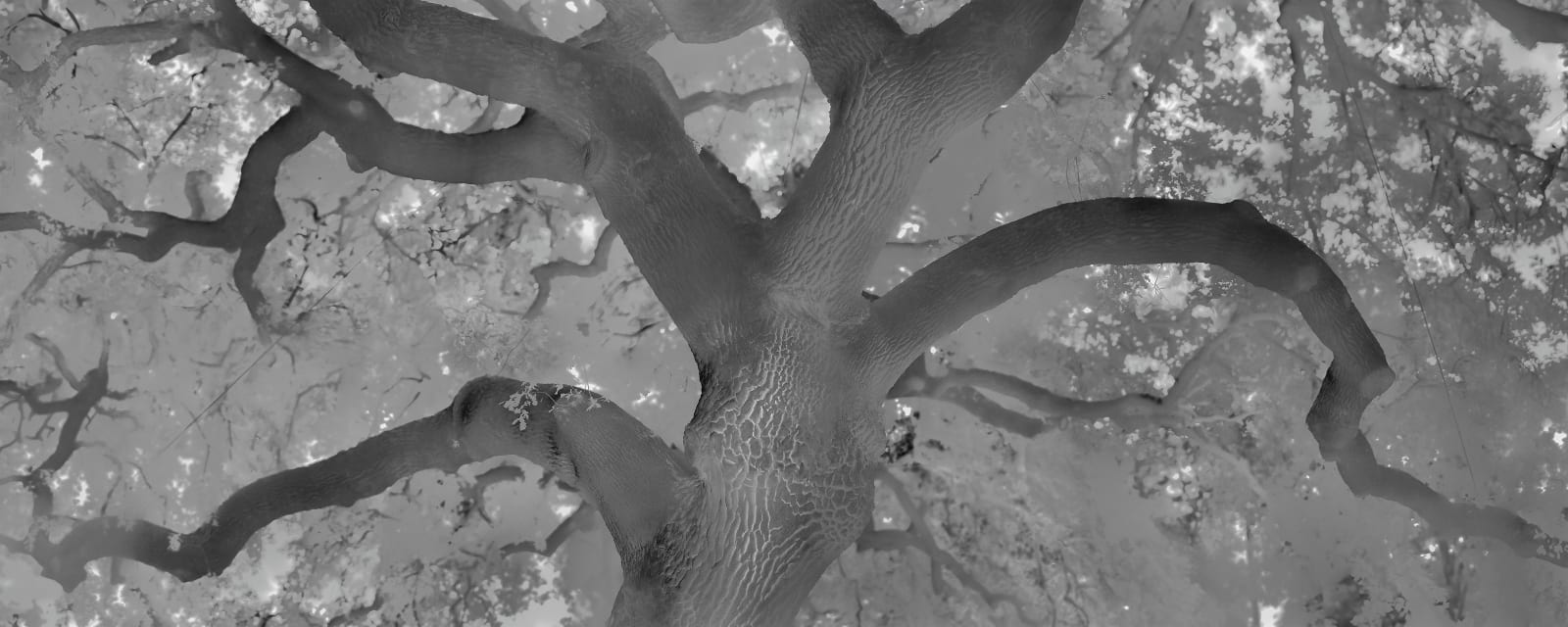Alex Turner American, b. 1984
Valley Oak Used for Public Lynchings, Estimated 300 Years Old, Los Angeles County, CA, 2025
Gelatin silver print mounted to museum board
8 x 20 in.
Edition of 5 plus 2 artist's proofs
In California, Valley Oaks were often used for public lynchings, their widespread range and long, sturdy limbs making them grim instruments of racial violence. Historians believe this unnamed Valley Oak...
In California, Valley Oaks were often used for public lynchings, their widespread range and long, sturdy limbs making them grim instruments of racial violence. Historians believe this unnamed Valley Oak was used for multiple lynchings in the ranching community of Calabasas throughout the late 1800s and early 1900s. Nearby, a more visible “Hangman’s Tree” was promoted as the site of such events, though it was likely a fabrication for publicity.
About the series:
Blind Forest is a cross-disciplinary study of how trees absorb and reflect human and environmental histories. Created in collaboration with ecologists, historians, and anthropologists, the project explores their capacity to reveal shifting climates, cultural values, and systems of power over time. Set across California, Blind Forest employs thermal imaging—commonly used in surveillance, fire detection, and tree health assessment—to visualize the conservation, transmission, and dispersion of heat. Each large-scale image is composed from hundreds of thermal exposures, treating heat as both data and narrative: a high-fidelity record of vitality, stress, and decay.
The trees featured here trace enduring tensions between extraction and preservation, survival and erasure, change and continuity. They are both ecological keystones and mirrors of human intent. In this precarious moment, Blind Forest invites us to consider trees not as passive scenery, but as active participants—living archives that conserve, transmit, and disperse meaning across generations.
About the series:
Blind Forest is a cross-disciplinary study of how trees absorb and reflect human and environmental histories. Created in collaboration with ecologists, historians, and anthropologists, the project explores their capacity to reveal shifting climates, cultural values, and systems of power over time. Set across California, Blind Forest employs thermal imaging—commonly used in surveillance, fire detection, and tree health assessment—to visualize the conservation, transmission, and dispersion of heat. Each large-scale image is composed from hundreds of thermal exposures, treating heat as both data and narrative: a high-fidelity record of vitality, stress, and decay.
The trees featured here trace enduring tensions between extraction and preservation, survival and erasure, change and continuity. They are both ecological keystones and mirrors of human intent. In this precarious moment, Blind Forest invites us to consider trees not as passive scenery, but as active participants—living archives that conserve, transmit, and disperse meaning across generations.

